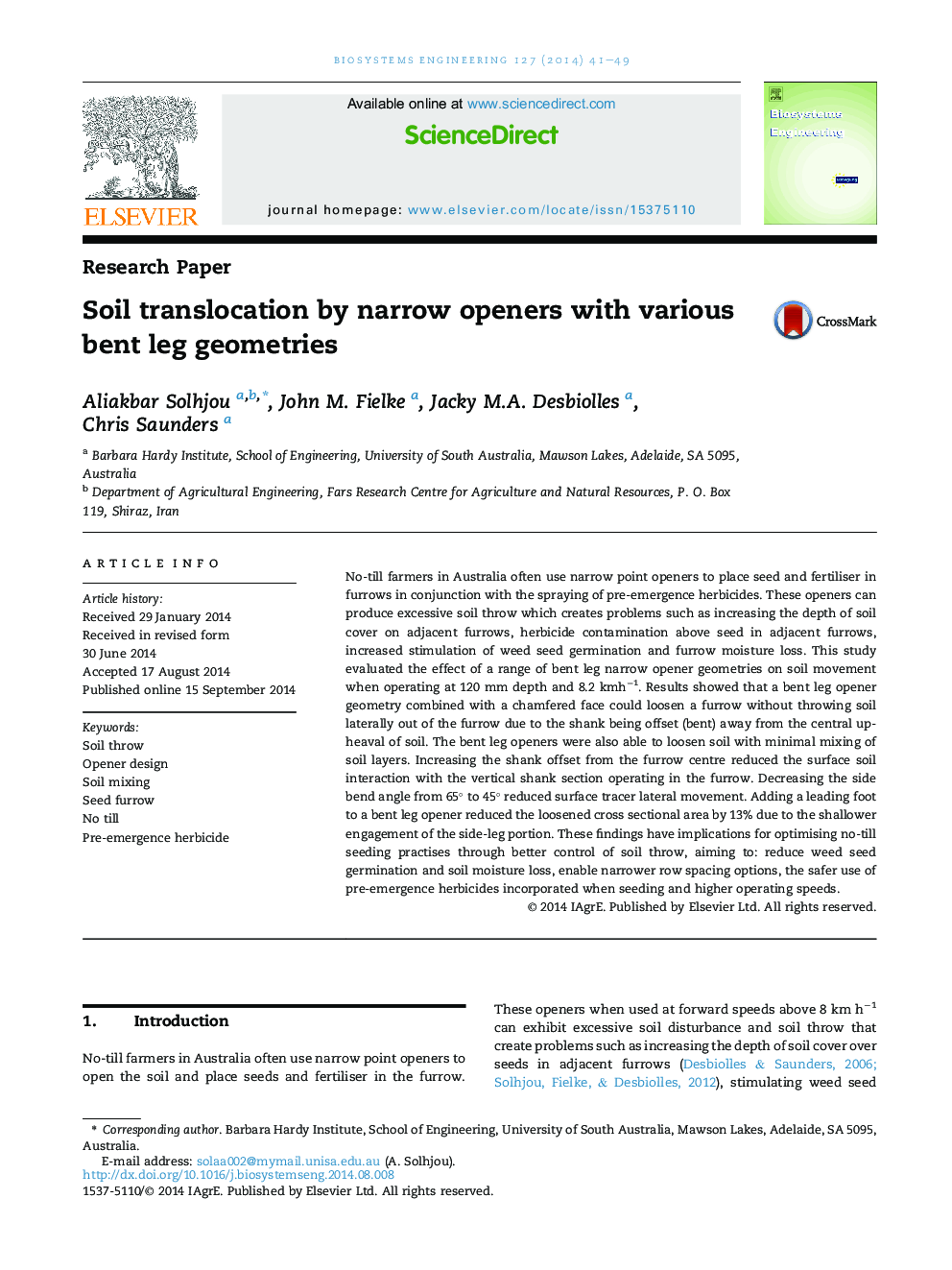| Article ID | Journal | Published Year | Pages | File Type |
|---|---|---|---|---|
| 1711103 | Biosystems Engineering | 2014 | 9 Pages |
•With a narrow soil opener, soil throw out of the furrow can be eliminated.•Soil layer mixing in a furrow can be minimised.•Increasing the shank offset reduces soil surface interactions.•Adding a leading foot reduced the loosened furrow volume by 13%.•A band can be cleared of surface soil to give a zone for safe plant emergence.
No-till farmers in Australia often use narrow point openers to place seed and fertiliser in furrows in conjunction with the spraying of pre-emergence herbicides. These openers can produce excessive soil throw which creates problems such as increasing the depth of soil cover on adjacent furrows, herbicide contamination above seed in adjacent furrows, increased stimulation of weed seed germination and furrow moisture loss. This study evaluated the effect of a range of bent leg narrow opener geometries on soil movement when operating at 120 mm depth and 8.2 kmh−1. Results showed that a bent leg opener geometry combined with a chamfered face could loosen a furrow without throwing soil laterally out of the furrow due to the shank being offset (bent) away from the central upheaval of soil. The bent leg openers were also able to loosen soil with minimal mixing of soil layers. Increasing the shank offset from the furrow centre reduced the surface soil interaction with the vertical shank section operating in the furrow. Decreasing the side bend angle from 65° to 45° reduced surface tracer lateral movement. Adding a leading foot to a bent leg opener reduced the loosened cross sectional area by 13% due to the shallower engagement of the side-leg portion. These findings have implications for optimising no-till seeding practises through better control of soil throw, aiming to: reduce weed seed germination and soil moisture loss, enable narrower row spacing options, the safer use of pre-emergence herbicides incorporated when seeding and higher operating speeds.
